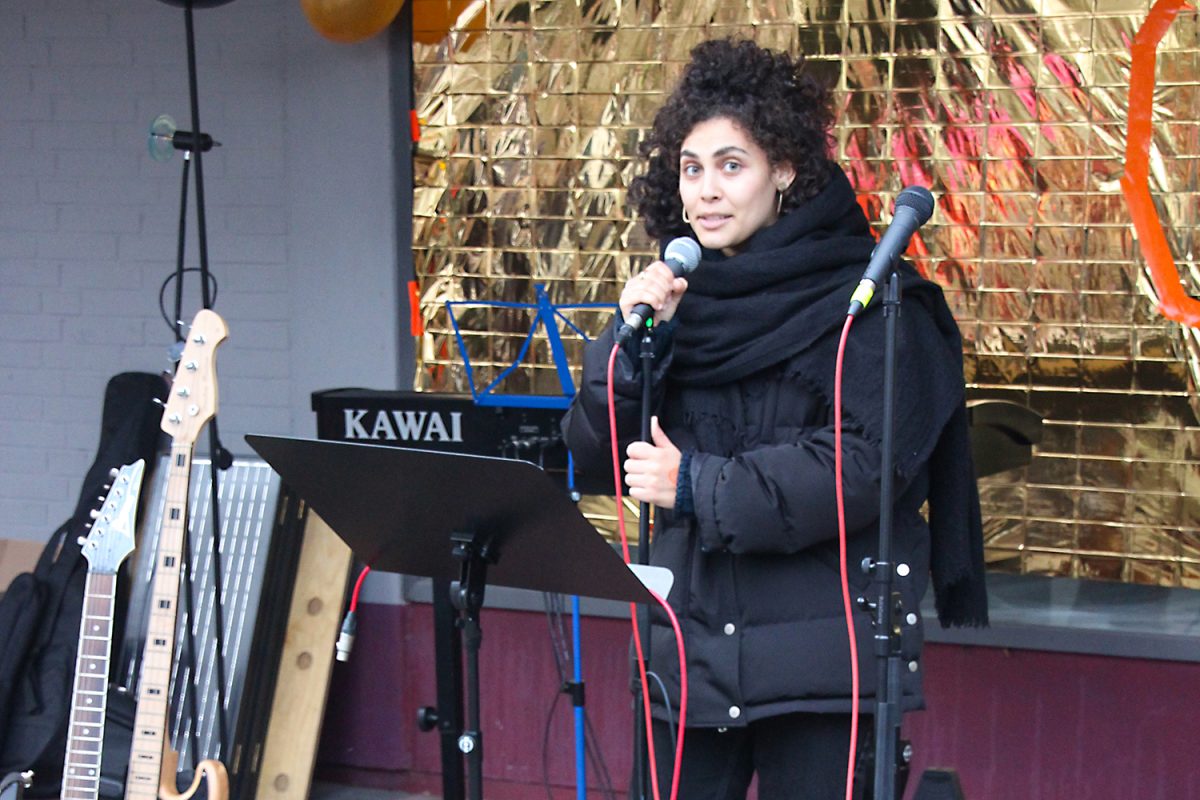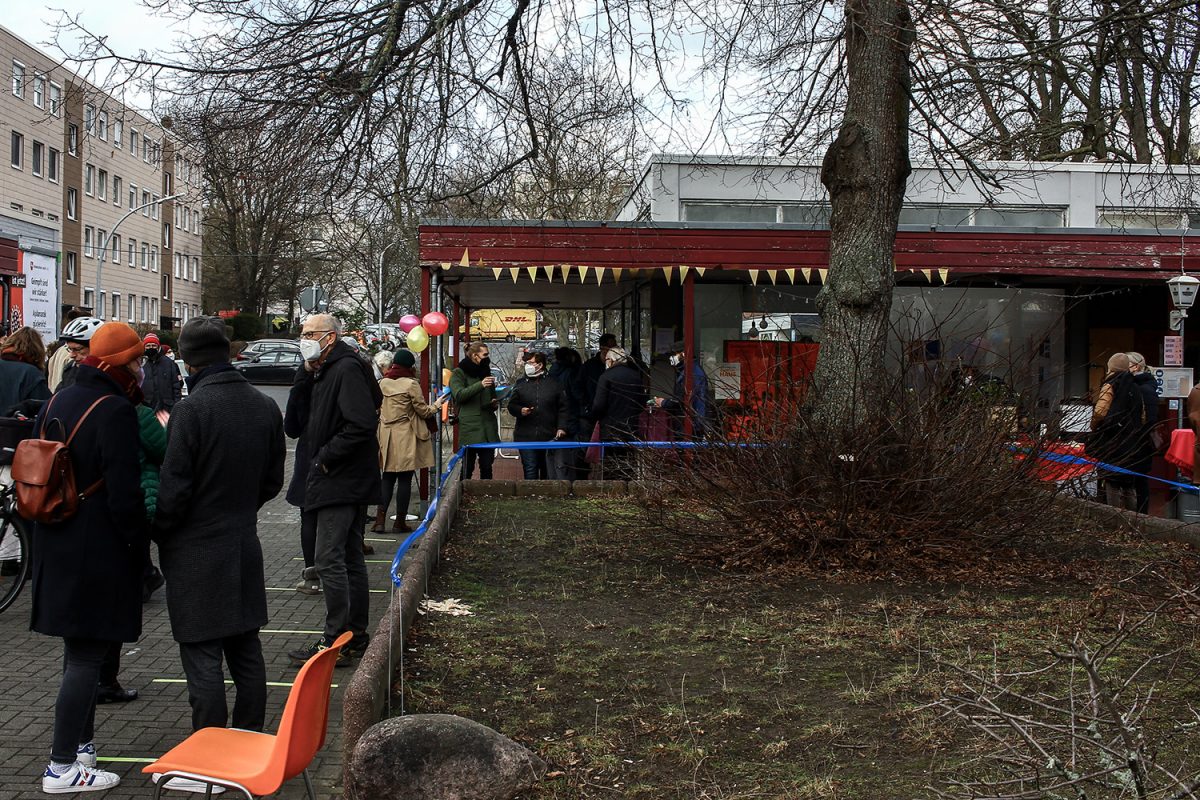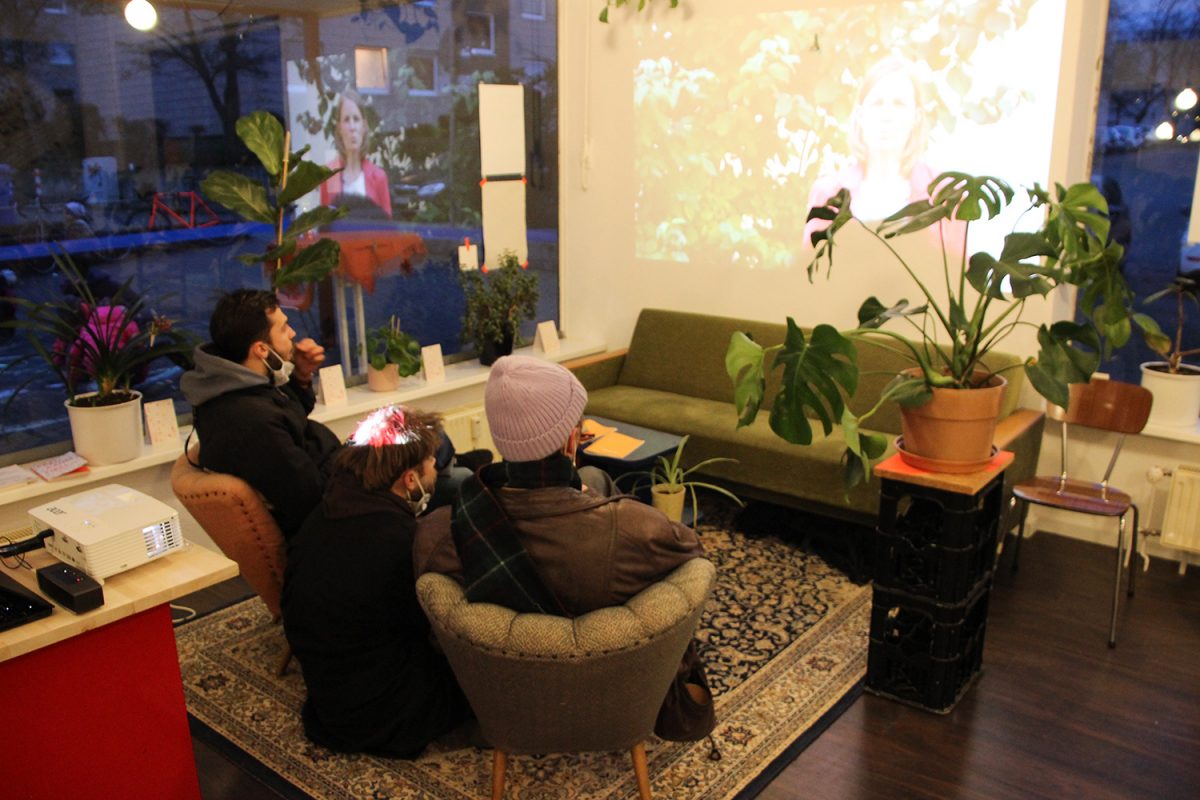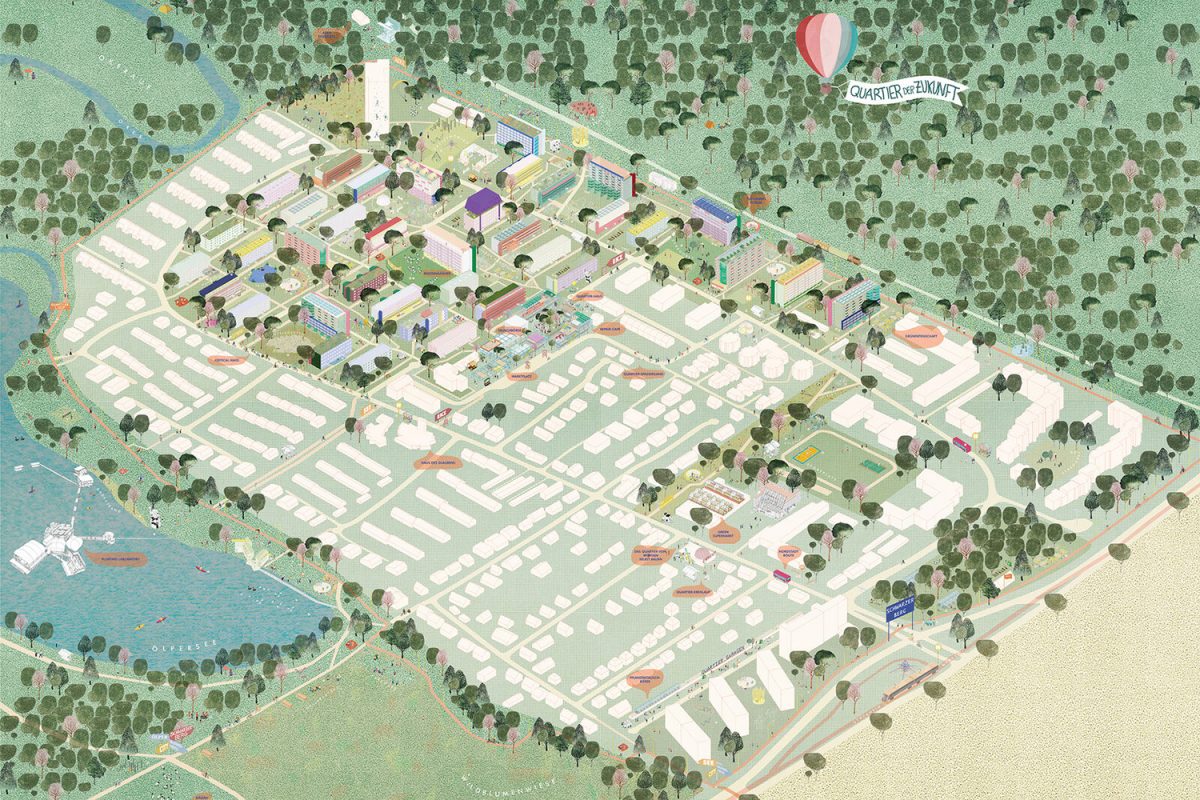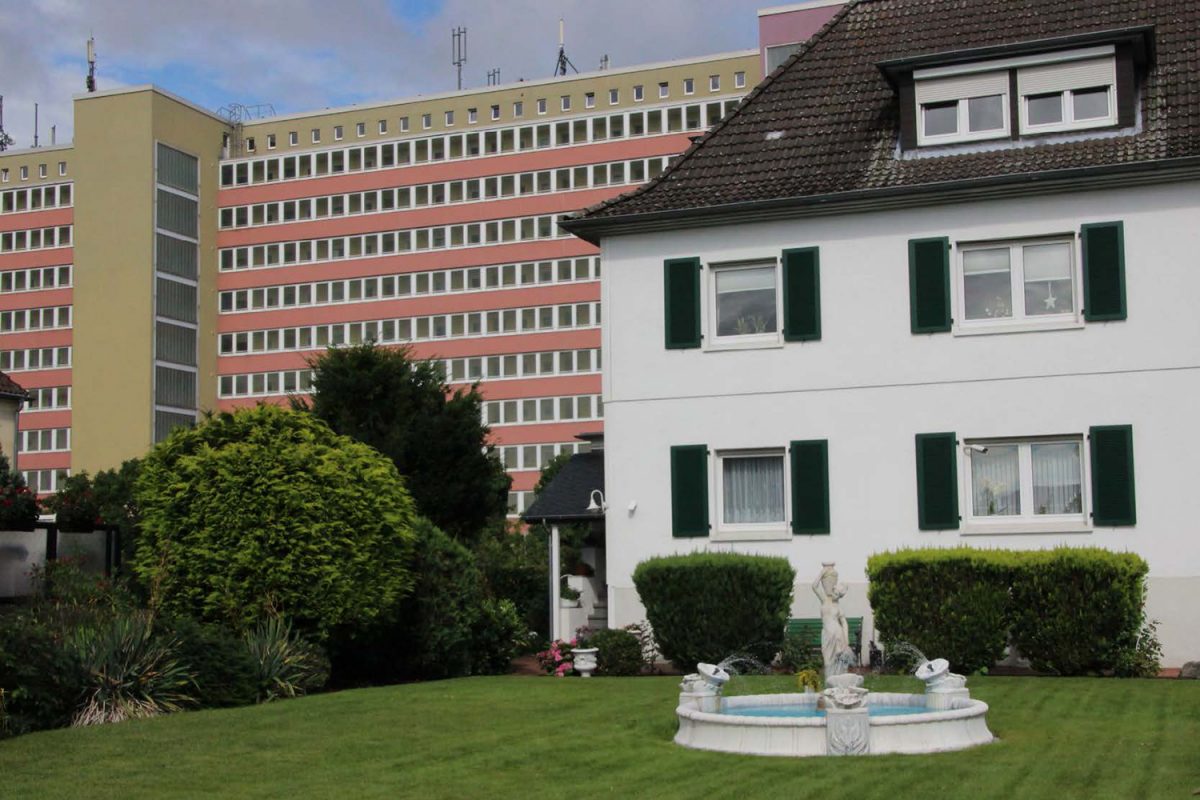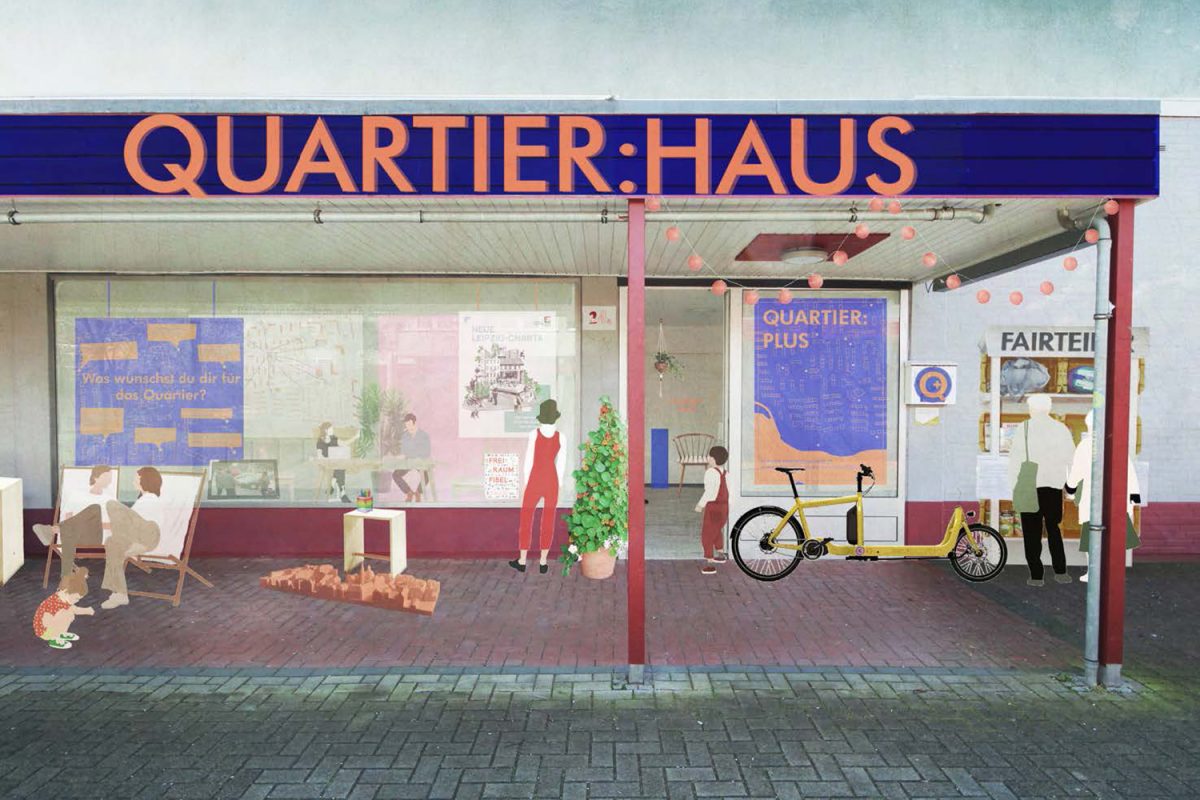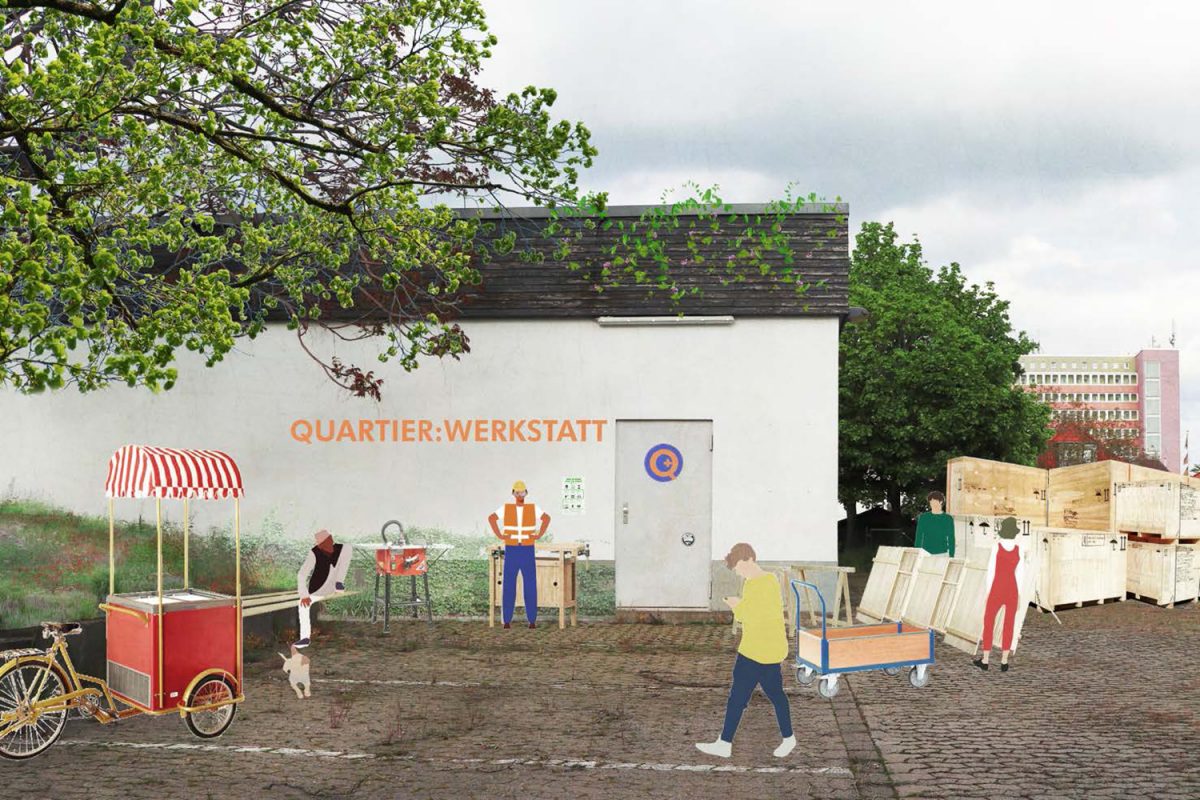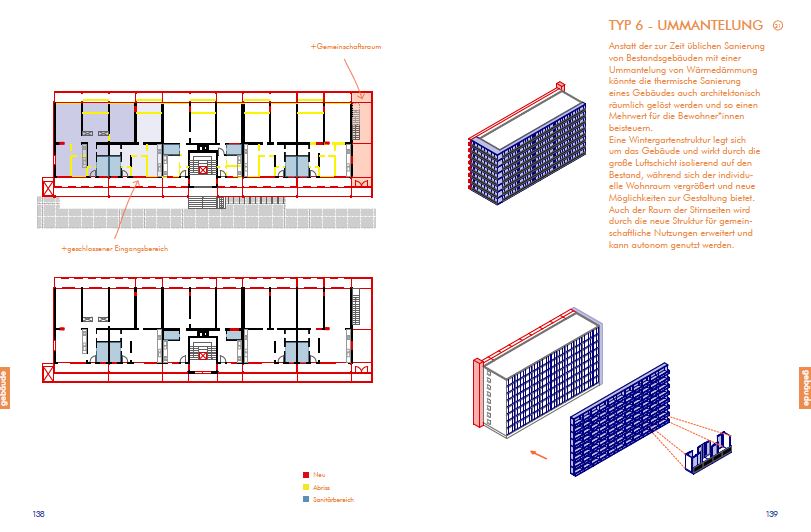The Quarter Maker Architecture graduate Ayat Tarik Kamil leads district development project
What potential do quarters like Schwarzer Berg in the north of Braunschweig offer? How can the quarter be revitalised? And how can the residents help determine and shape the development? Ayat Tarik Kamil asked herself these questions during her Master’s thesis in architecture. But it was not to remain a theoretical work. Together with the Quartier:PLUS initiative, she has now opened the Quartier:HAUS (Quarter:HOUSE) in an empty shop.
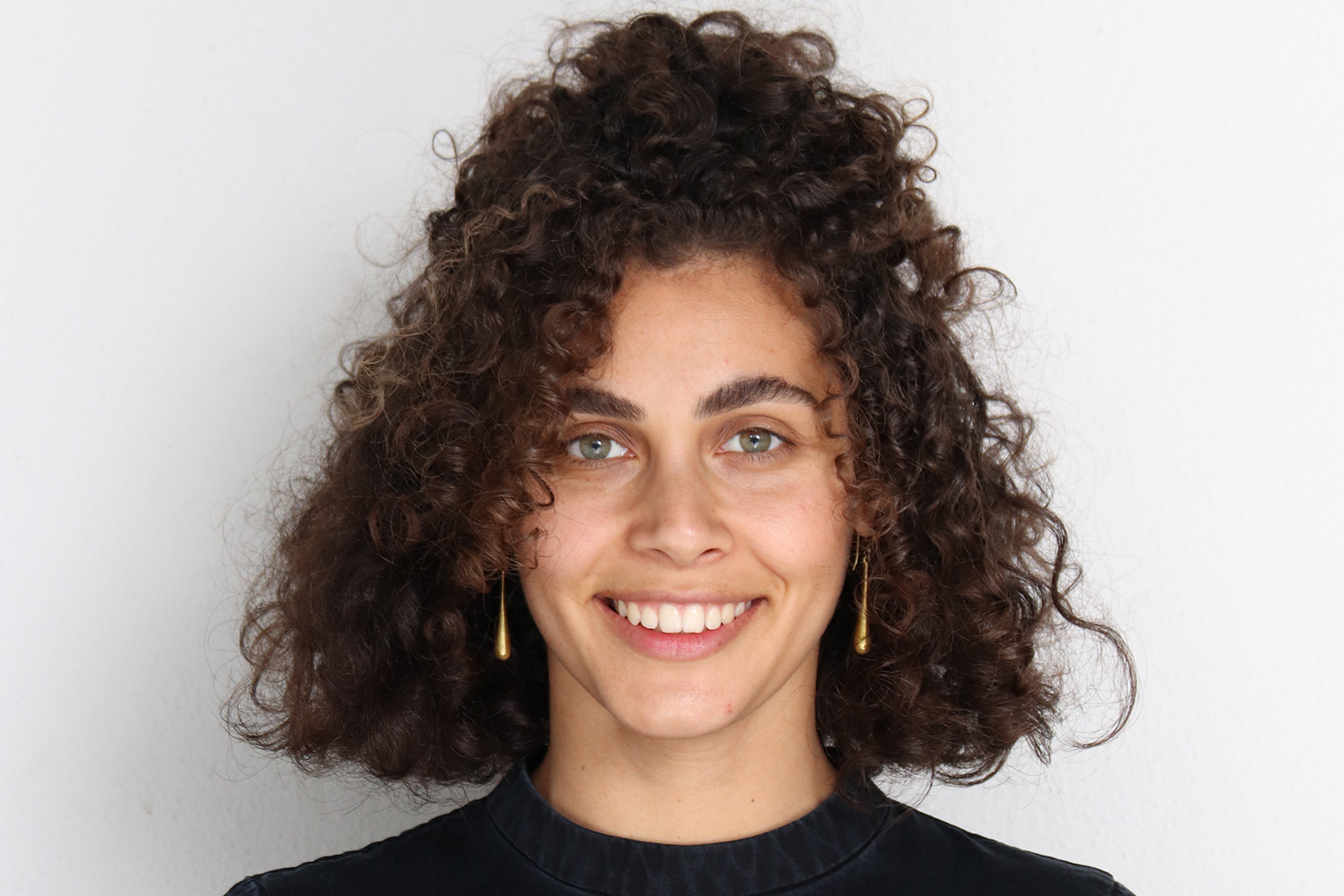
Ayat Tarik Kamil: “As an architect, I think that urban development should be thought about from within and with society.” Photo credit: Felix Horn/TU Braunschweig
Ayat Tarik Kamil wants the Quartier:HAUS in the Ligusterweg shopping centre to become a creative meeting place and serve as a contact point for residents of the Schwarzer Berg quarter. People should exchange ideas here, talk about current issues in the quarter and pursue their own projects. “We want to develop possible futures for the neighbourhood together with the residents,” says the architecture graduate.
But back to the beginning. Ayat Tarik Kamil has lived in the Schwarzer Berg for seven years. During the Corona lockdowns, she took a closer look at the quarter on walks, asked herself why many shops in the shopping centre are empty and why some corners seem neglected. That’s why she sought talks with residents and approached the citizens’ association Am Schwarzen Berge e.V. and other possible partners in order to change something in the district.
Urban Development from Within Society
Ayat Tarik Kamil calls herself Quartier:MACHERIN (Quarter:MAKER): “As an architect, I think that urban development should be thought out of and with society. Planners should be involved in the process through their expertise as mediators. With Quartier:PLUS, I want to combine the mix of top-down and bottom-up planning to stimulate inclusive, sustainable and community-oriented urban development.”
In her Master’s thesis at the Institute for the History and Theory of Architecture and the City (GTAS), she developed strategies for this, laying the foundation for the Quartier:PLUS initiative, of which she is the project manager. Her work is a “catalogue of possibilities” that shows how future planning for green and open spaces, for transport and community uses can be rethought and implemented according to principles of the common good.
“Ayat’s initiative on the Schwarzer Berg deals with questions that are of interest far beyond the quarter, even far beyond the city of Braunschweig,” adds Professor Tatjana Schneider, who supervised the content of the term paper and later the Master’s thesis. “Ayat anchors impulses for future neighbourhood developments in a concrete place, occupying a private vacant lot and using it to show how non-profit functions can create new open spaces that are of benefit to the public. For me, the project vividly shows what can be achieved in the city when science, university, civil society and politics work together. It shows how science and the city can enter into a productive and transformative dialogue with each other.”
“Nothing happens here”
While Ayat Tarik Kamil was working on her Master’s thesis, she was always on the move in the Schwarzer Berg. For her “Quarter Talks” she set up a kind of mobile living room, made “critical places” visible and asked the residents what they wanted for their district.
On the one hand, there is the infrastructure: a cash machine, a post office counter, doctors are on the wish list, better public transport connections. “Many districts outside the city centres struggle with these challenges,” explains the architecture graduate. Corona acted like a burning glass here.
The tenor of many young people on the Schwarzer Berg: “Nothing happens here.” That’s why they go to the city centre, meet at the bus stop. Life no longer takes place in the quarter. But it is not only the young people who lack a place to get together.
The Schwarzer Berg offers a lot of potential
The Quartier:HAUS aims to change that: A parent-child meeting place now has its “home” here, and residents can get to know each other through regular neighbourhood cafés. Exhibitions by residents or flea markets, festivals, a neighbourhood garden and flower meadows are planned. The Quartier:HAUS is intended to be the pulsating centre and contact point for ideas, groups and teams. The 40-square-metre former shop adapts itself to the different needs. So the space is constantly changing.
Just as the existing buildings in the Braunschweig quarter could change. In her Master’s thesis, Ayat Tarik Kamil proposes, for example, a conservatory structure in front of one of the residential buildings, enveloping it. This would not only have an insulating effect, but would also increase the individual living space and offer new possibilities for design. “The Schwarzer Berg is a resource that should also be used,” says the budding architect who, in addition to managing the Quartier:PLUS project, is also employed by GTAS. “The settlement, designed as a modular system, offers a lot of potential. One should consider how to strengthen these districts and thus create and upgrade living space in a resource-saving way.”
Of course, always by involving the residents, she says. Ayat Tarik Kamil does not see architecture as “pure building”, but as planning that has to be thought out together with the people.
That’s why she hopes that the Quartier:HAUS will be accepted by the residents of Schwarzer Berg, that they will take responsibility for their neighbourhood, that they will identify more with their quarter, that not only will colourful meadows soon bloom here, but that something will emerge between the houses that will benefit everyone.

